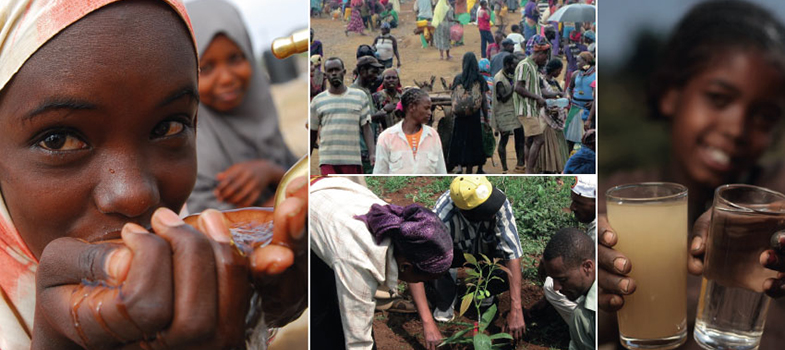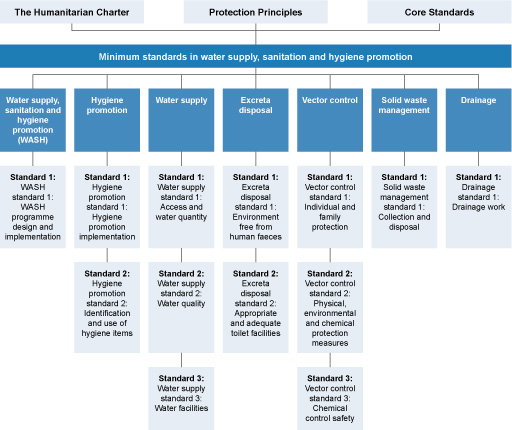14.4 Standards for emergency response
There are various standards produced by different agencies that specify the minimum requirements for water supply, sanitation, hygiene, food, shelter and health in emergency situations. Two important ones are the United Nations High Commissioner for Refugees Standards (UNHCR, 2007) and the Sphere Handbook (Sphere Project, 2011). You may also come across other standards produced by different agencies. One thing they have in common is the importance of providing facilities that prevent the spread of disease, do not contaminate water supplies and give the people sufficient dignity and privacy. These standards can be useful in planning and designing an emergency response and act as a goal for achievement.
The Sphere standards describe the humanitarian actions that should be taken in the event of an emergency in order for ‘disaster-affected populations to survive and recover in stable conditions and with dignity’ (Sphere Project, 2011). In the section on water supply, sanitation and hygiene promotion, there are several standards in different categories, as shown in Figure 14.2.
14.3 Rapid field assessment in an emergency

